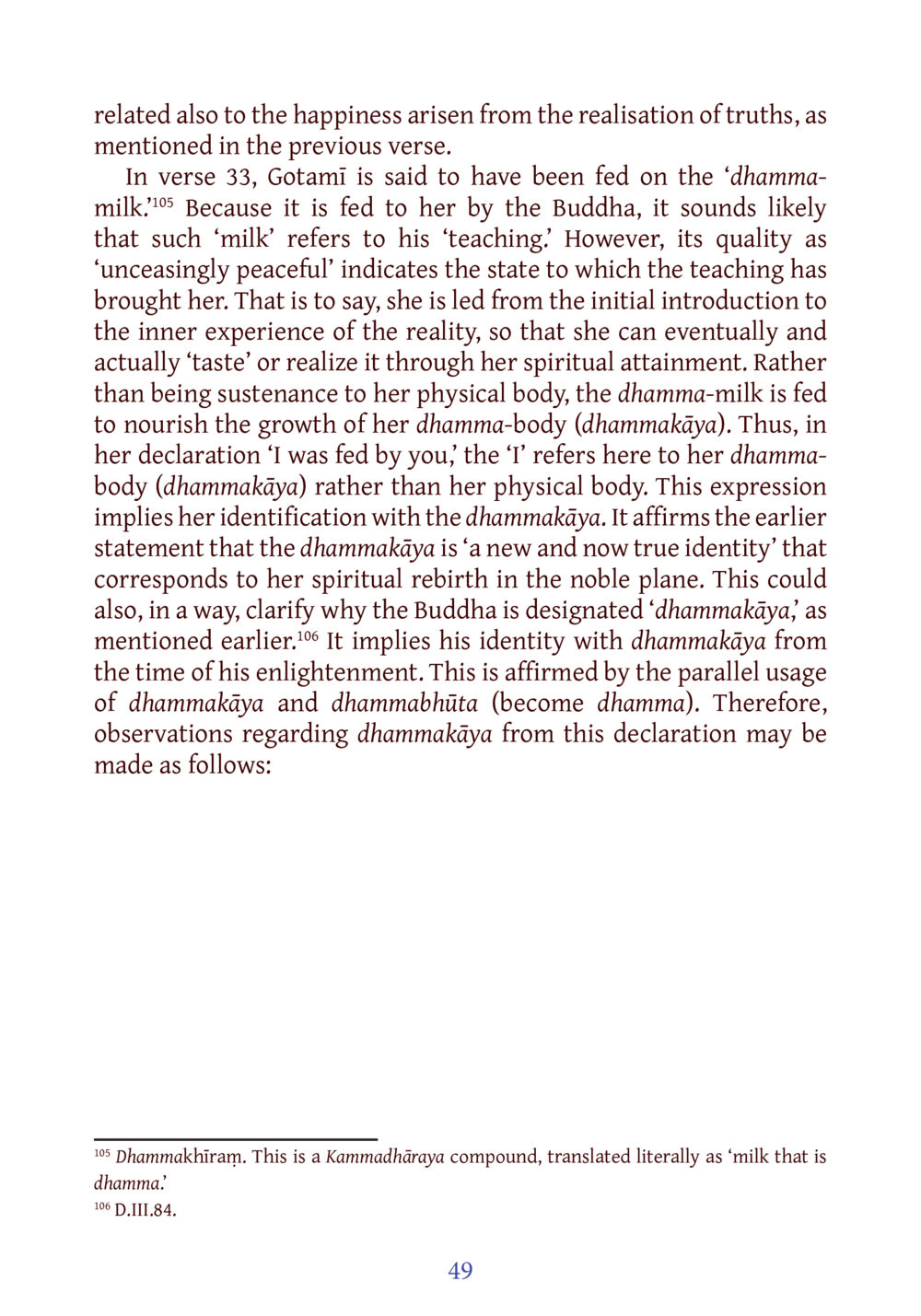The Essence of Dhamma-Milk in Spiritual Growth : หน้า 70/141
DIRI Journal : หน้า 70/141 Exploring the concept of dhamma-milk and its role in spiritual attainment through the teachings of the Buddha.
0 ครั้ง

สรุปเนื้อหา
The concept of dhamma-milk represents spiritual nourishment derived from the Buddha's teachings, leading to inner peace and realization of truths. Gotami's declaration signifies the transition from physical sustenance to the growth of her dhamma-body, affirming her identification with dhammakāya and her spiritual rebirth. This highlights the connection between the Buddha and dhammakāya, indicating enlightenment and a new identity aligned with spiritual wisdom. The insights underscore the importance of dhamma-milk in achieving true fulfillment and happiness through understanding and experience.
หัวข้อประเด็น
-Dhamma-Milk and Its Significance
-Spiritual Nourishment in Buddhism
-Gotami's Transformation through Teaching
-Understanding Dhammakāya
-The Role of Truth in Happiness
ข้อความต้นฉบับในหน้า
หน้าหนังสือทั้งหมด













































































































































